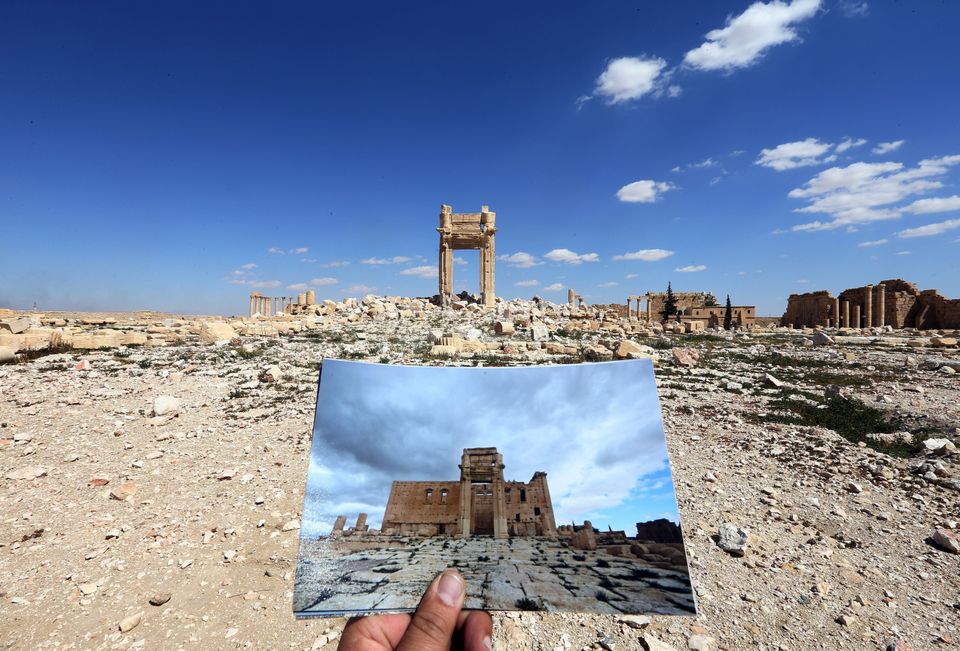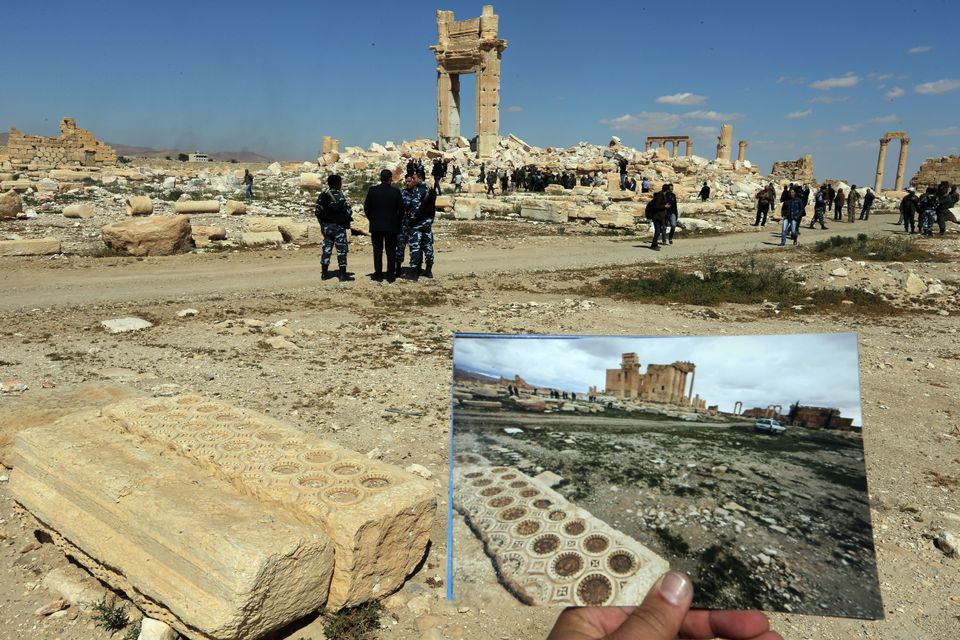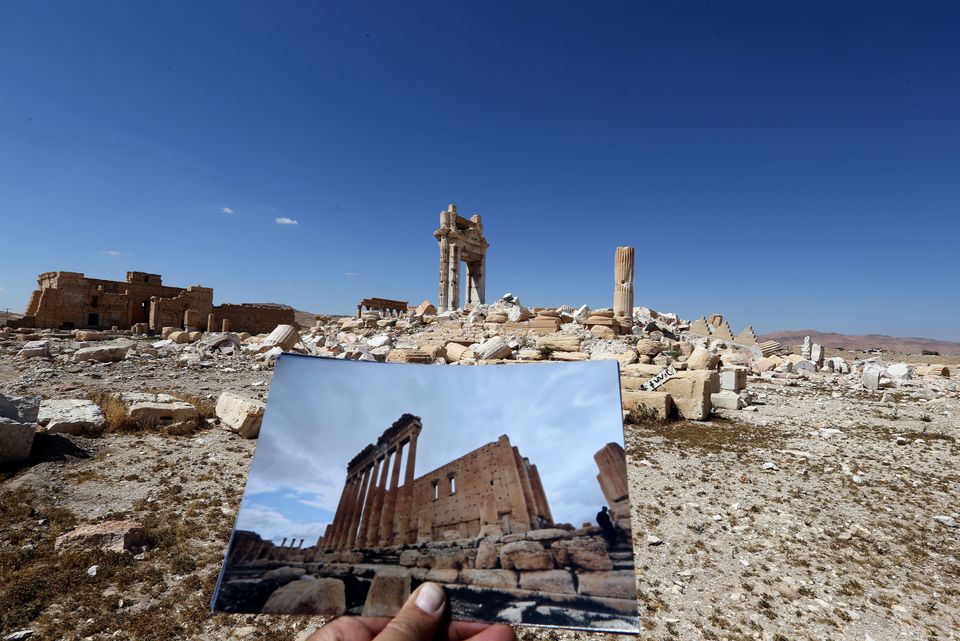The ancient Syrian city of Palmyra, captured 10 months ago by members of the Islamic State group, was this week taken back from the so-called Islamic State (IS) terror group - and the damage caused is now becoming clear.
Pictures of the UNESCO world heritage site taken this week after the city was recaptured by Syrian troops showed some important archeological elements remain intact.
However, a set of images taken at the site comparing it with old photographs has shown the heartbreaking devastation caused to some of the beautiful remains of the ancient city…
JOSEPH EID via Getty Images
A picture taken on March 31, 2016 shows a photographer holding his picture of the Temple of Baal Shamin seen through two Corinthian columns taken on March 14, 2014 in front of the remains of the historic temple after it was destroyed by Islamic State (IS) group jihadists in September 2015 in the ancient Syrian city of Palmyra.Syrian troops backed by Russian forces recaptured Palmyra on March 27, 2016, after a fierce offensive to rescue the city from jihadists who view the UNESCO-listed site's magnificent ruins as idolatrous. / AFP / JOSEPH EID (Photo credit should read JOSEPH EID/AFP/Getty Images)
JOSEPH EID via Getty Images
Another image of the Temple of Bel.
JOSEPH EID via Getty Images
JOSEPH EID via Getty Images
JOSEPH EID via Getty Images
A general view taken on March 31, 2016 shows a photographer holding his picture of the Temple of Bel taken on March 14, 2014 in front of the remains of the historic temple after it was destroyed by Islamic State (IS) group jihadists in September 2015 in the ancient Syrian city of Palmyra.Syrian troops backed by Russian forces recaptured Palmyra on March 27, 2016, after a fierce offensive to rescue the city from jihadists who view the UNESCO-listed site's magnificent ruins as idolatrous. / AFP / JOSEPH EID (Photo credit should read JOSEPH EID/AFP/Getty Images)
JOSEPH EID via Getty Images
A general view taken on March 31, 2016 shows a photographer holding his picture of the Arc du Triomphe (Triumph's Arch).
JOSEPH EID via Getty Images
The Arc du Triomphe from a different angle
On Friday, Channel 4 journalist Lindsey Hilsum visited the site and tweeted some striking images from the area.
Details included graffiti left behind by IS (also known as Isis, Isil and Daesh) and soldiers celebrating reclaiming the site…
But despite IS’ best efforts to obliterate any non-Islamic history, many experts were pleased at the amount of relics which still remained after the militants’ retreat.
Syrian Antiquities Chief Maamoun Abdelkarim confirmed to Agence France-Presse earlier this week, “the landscape, in general, is in good shape.”
Those sentiments were echoed by Syrian troops who now stand guard over the site. A soldier told AFP: “We were so scared we would enter the ruins and find them completely destroyed… But when we entered and saw it, we were relieved.”






